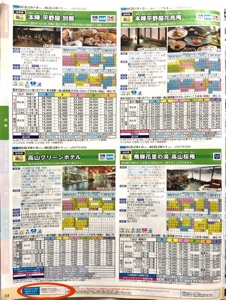
Up to now, the main question with the program has been whether or not trips starting and ending in Tokyo would be included. Of course the program was designed for that to be the case; the only problem was that Tokyo COVID cases spiked just before the program was set to go into effect, resulting in the capital being excluded for a time.
But now the program is good for travel nationwide, and so we decided to check it out. How viable is it to travel using the “Go To Travel” program?
Making reservations for accommodations is easy. Online sites such as jalan.net clearly show whether hotels and inns are eligible for the discount, and the discount is calculated in before you finalize your stay. (And when we showed up at our selected accommodation and paid, we were able to confirm that there are no hidden fees or snags — what you see is what you pay.)

So we went to the nearest JTB office and waited to speak to a travel agent (it was crowded, as a lot of people are checking out the program). And there we found some disappointing news:
• The program seems very much designed for group travel, and fairly upscale group travel. JTB looked up the modestly-priced hotel that we had reserved and said it wasn’t one of the ones covered by their version of the program — even though the hotel was definitely a participant.

• MOST disappointingly, the agent told us that fundamentally JR would not provide the 35% transit discount to solo travelers under any circumstances!
• That seemed hard to believe. So we looked in the pamphlet, and there it is, at the bottom of the page (see circled red section at left). Translation: “Plans using JR [for transit] are for 2 or more customers.”


And we even got an unexpected surprise: a ¥1000 gift coupon for each day of our stay!

Bottom line: we can definitely recommend this program, particularly if you’re traveling in a group of two or more. Even if you’re a solo cyclist, the savings on accommodation alone are tremendous: on our recent trip to Hida-Takayama, we stayed in a hotel room with private bath for about what it would have cost to stay in a youth hostel shared dormitory room (obviously not COVID-safe these days in any case). To reiterate: if you’re traveling in a group of 2 or more, talk to a travel agent to see if you can reserve both transit and accommodations at a reasonable savings. If you’re traveling solo, simply reserve a hotel or inn that’s participating in the program and pay full fare to get there and back.
(Travel tip: Remember that it never hurts to ask. We were leery of traveling on buses during the pandemic because bus seats are assigned and because it’s an enclosed space. But we decided to look into traveling on days that most travelers would avoid — Sunday early morning going and Saturday early afternoon returning — and asked how crowded the return bus was, and were told there were only a few passengers! So we decided to risk it, but specifically asked to be in seats as far away from the other passengers as possible. And it appears that nobody else had thought to do that, because when we boarded the bus, we found ourselves all the way at the back with no one nearby — the nearest other passenger was at least 3m away, and everyone else was double that. And because this is Japan, everybody was wearing masks anyway. Moral of the story: plan carefully, and remember that it never hurts to ask.)



























